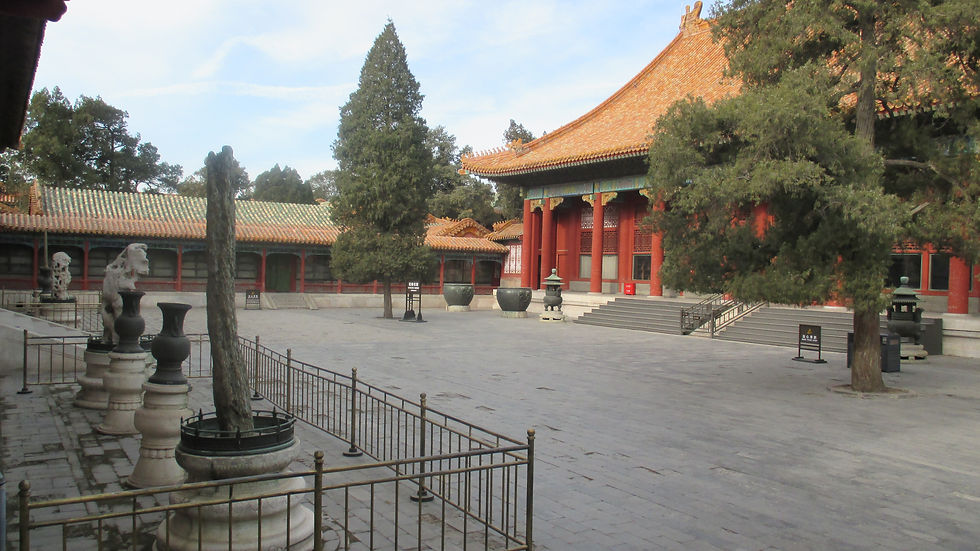Forbidden City, Beijing, PRC 紫禁城,北京, 中国

This was my first solo weekend trip to get used to some new backpacking gear and the Chinese transit system. There were very few tourists and great weather here in Beijing 北京。 The Forbidden City 紫禁城 is massive and functioned as an actual city when in use by the emperor.
I have included 17 photos (so many!) but for good reason. First and foremost, the Forbidden City deserves it. Second, I was super lucky at the time because the government closed down the factories that week for a big international conference (so clear sky) and it was cold, so not many tourists.
The photo above is the Hall of Supreme Harmony 太和殿. It is set on three layers of marble and is the largest standing wood-built hall in China.

Greetings from the pavilion. The Hall of Supreme Harmony overlooks the square, with the Tower of State Benevolence 体仁阁 to its left. Behind the tower is a large section where select 'regular' civilians lived. This consisted of about 25% of the total city.

Small residential courtyard. It still blows my mind how few tourists there were. I went back the next year and this place was slammed.


Nine Dragon Screen 九龙壁. Photo taken by my Australian friend, Karla.

Legend has it that one of the laborers who was working on this wall dropped and accidentally broke a tile. They were not replaceable and because he was afraid of being put to death as punishment, he took a block of wood and carved, painted, and filled it in. It wasn't noticeable until the tile started to decay, but that was a long time after, so he got away with it. (Really, this story was probably just made up by the current government's propaganda team. They do this frequently at popular locations to create "urban legends").

A view towards the Beijing industrial district in the east.


This is the Pavilion of Flowing Music 畅音阁. I really enjoyed this part, although it was very difficult to get a decent photograph. This was the stage for musicians and the drama troupe. They would perform and the emperor and/or empress would have a front and center seat, with nobility nearby. The theater is loaded with awesome trap doors and levers and pulley systems.

The Gate of Heavenly Purity 乾清门. This picture is one of my favorites with the gradual ascension of gates and structures.
This gate is where the emperor dealt with state affairs. It separates the inner and outer sections of the palace. The inner section contains the residential quarters of the emperor and family and concubines. The concubine's quarters, by the way, constitute about 20% of the entire palace. It seems the emperors played their roles as supreme rulers with little hesitation. Also, the golden vats contained water and served as the palace's fire-response system.

This lion resonated with me. The strength it imposed was intimidating. This lion looks over her cub as she guards the palace from evil spirits.


This lion is opposite the previous lion. He cradles Earth in the right paw.


Tower of State Benevolence 体仁阁.

Tian'anmen Square 天安门广场 on a beautiful, cold Saturday in December.